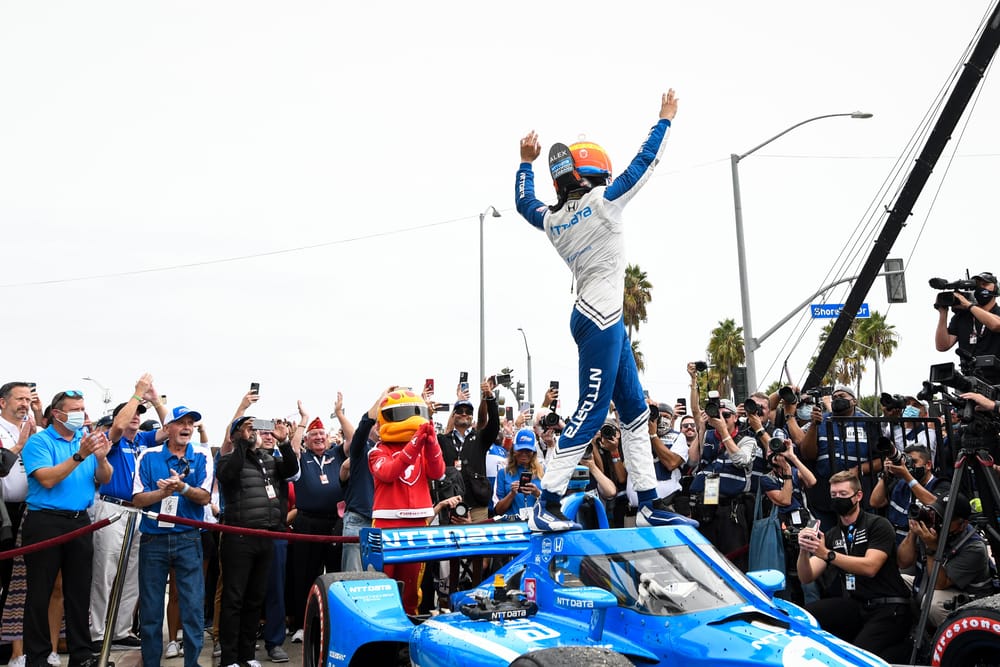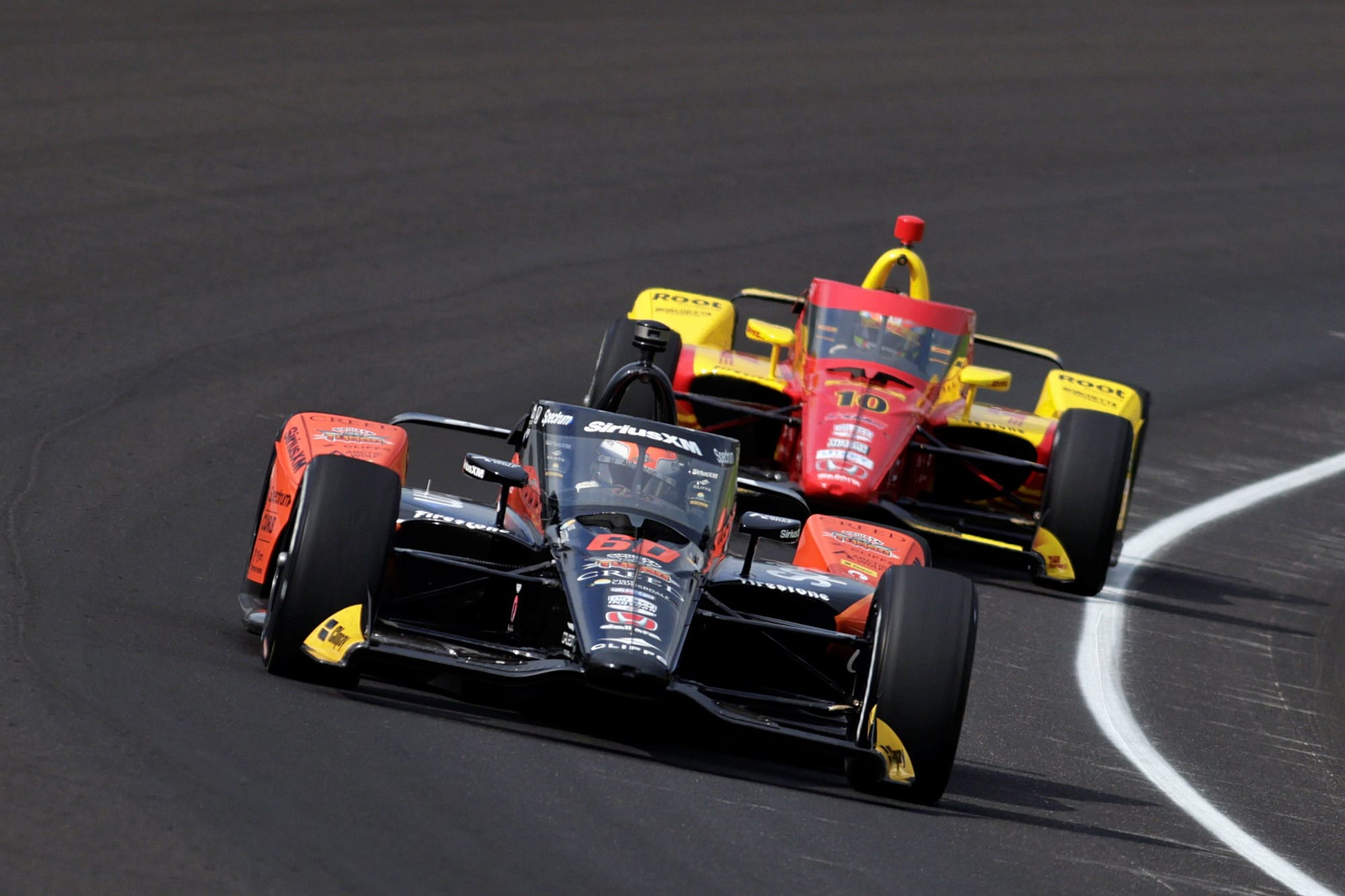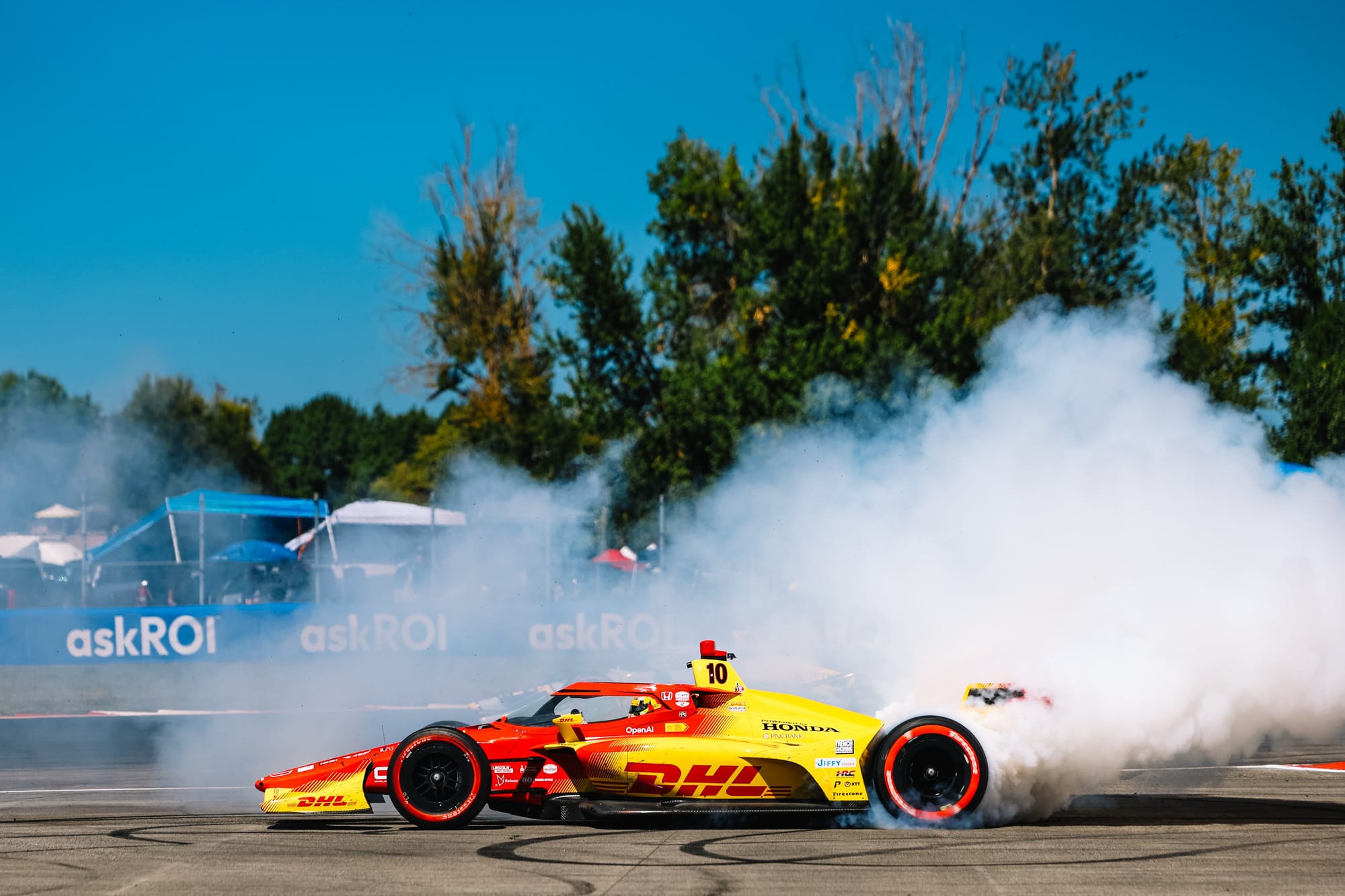Back in 2020, when Chip Ganassi Racing signed Alex Palou, the IndyCar Reddit community debated whether Palou was just "another Ed Jones" - a driver who scored two podiums at Ganassi, making little meaningful impression during his time there.
That gives you an idea of how unproven and unknown as a top-level prospect Palou was at that time.
Recently, you might think back to Ganassi sticking with Palou through the pair of lawsuits he's caused, firstly for saying he wanted to join McLaren despite being under contract with Ganassi, and then, currently, from McLaren for reneging on a contract he'd signed with the team for 2024.
But actually, the biggest commitment from Chip Ganassi was signing Palou in the first place: for having the guts to take a chance on a driver with a single IndyCar podium, who had finished behind his Dale Coyne team-mate Santino Ferrucci in the standings.
"I would bet a lot of money that he [Chip Ganassi] did not expect this kind of success throughout our first five seasons together," Palou tells The Race IndyCar Podcast, shortly after wrapping up his third-straight IndyCar title, his fourth in total in the five years since Ganassi signed him.
"I didn't either. I did not know. So it's very cool that I've been able to give back so much.
"People need to realise that when he and Mike [Hull, Ganassi managing director] and everybody at CGR decided to sign me, I only did one podium in IndyCar.
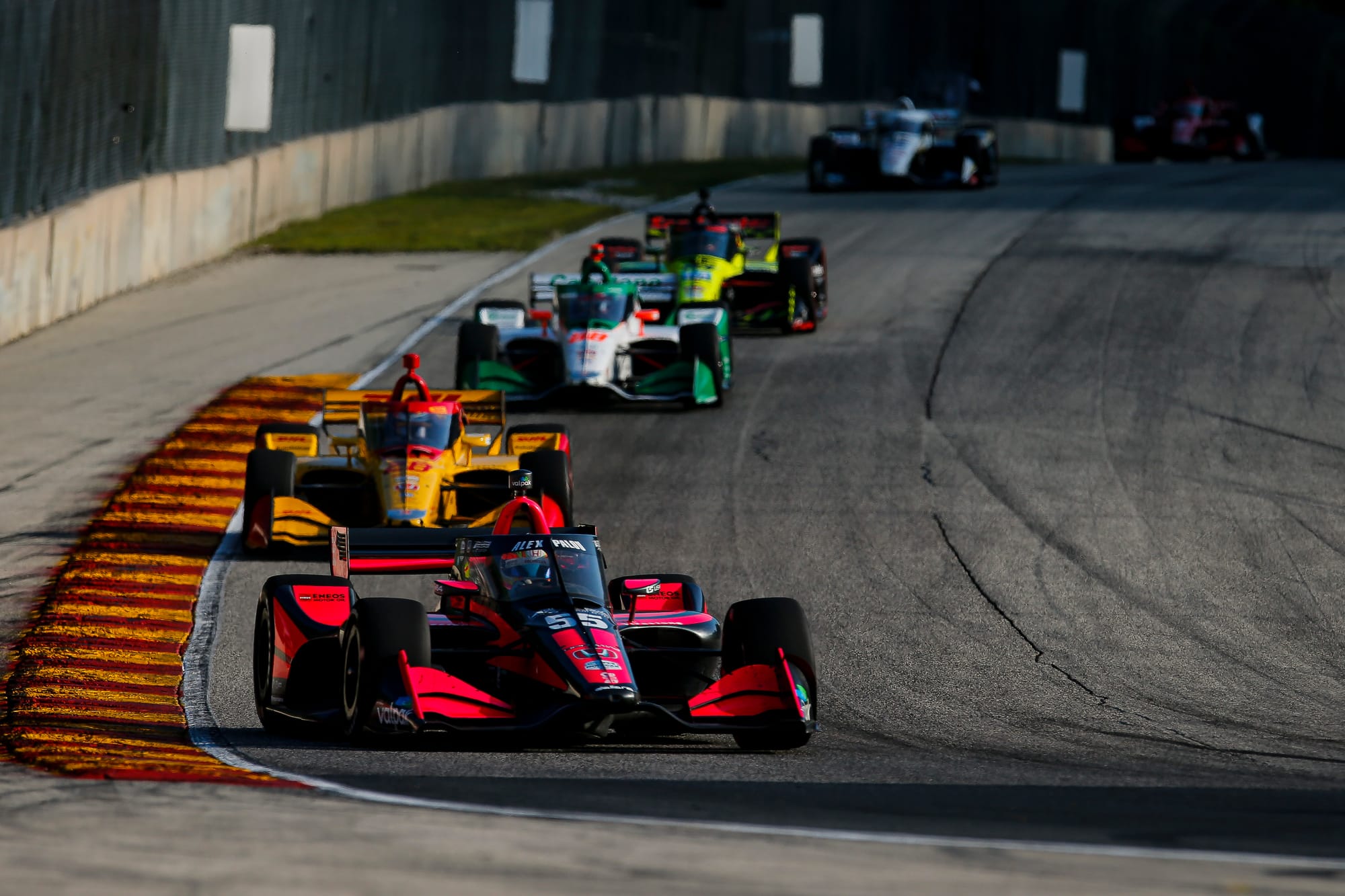
"I had an OK rookie season, but it was not tremendous. So the level of trust that he personally put in and the sponsors as well was very high.
"And also if we go back to 2022 with everything that happened [Palou saying he wanted to leave Ganassi, which almost triggered a lawsuit], giving back so much and trusting once again and realising that we were capable of just working back together and being even stronger than we were before, it's pretty incredible.
"I'll be forever grateful and I'll forever be wanting to give back more and more wins and more success to Chip and everybody at CGR for that."
The signs were there in 2020
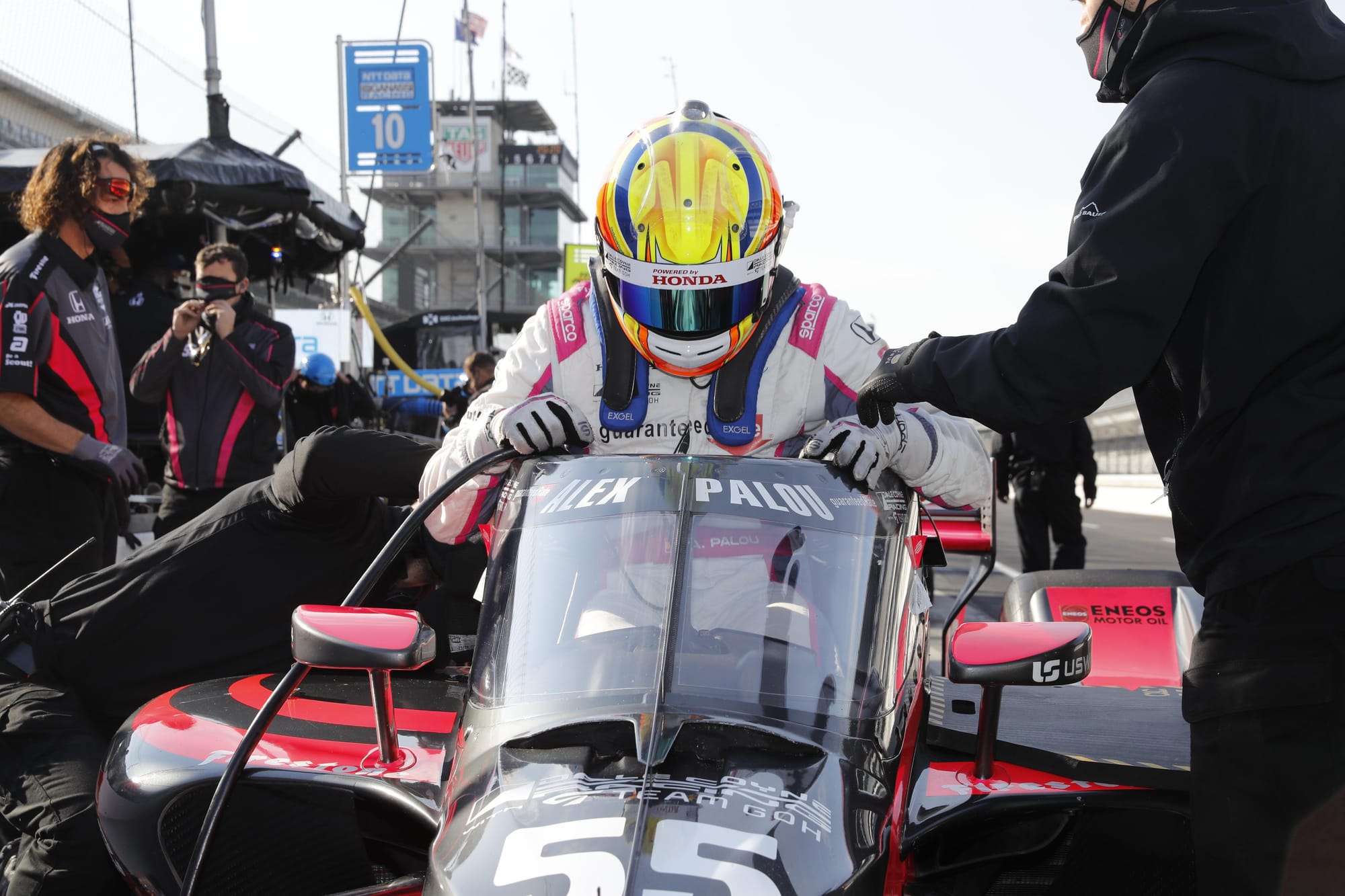
Palou's debut IndyCar season started with an even more important race than the Texas season opener: it was a race against time to even get into the country as the pandemic made travel difficult.
He eventually made it and got just one short test in before going into a truncated Texas oval IndyCar opener, where every session happened in one day, and where he was promptly taken out by Rinus VeeKay in the race.
With a two-lap qualifying effort setting the grid, his second lap would have put him somewhere at the back end of the top 10, which was impressive.
Everything about how he approached that weekend included the traits that you all know so well today: he's calm even under pressure, and doesn't get flustered when things happen outside of his control (like being taken out); he's absolutely rapid when the car and his experience allows; and he has a cautious optimism, without even a hint of arrogance or self-entitlement, in how he goes about things.
He was "s***ting himself" with "fear" before his first oval qualifying lap - now he's an Indianapolis 500 winner! - and despite only lasting 36 of the 200 laps at Texas he said it was the "the hardest race I have ever done in my life".
The Race's assessment afterwards was simple, and you can read a full feature on that weekend in 2020 here - written at the time, so you can't accuse us of pretending to have seen something now he's so successful: "Now he just has to prove he has the pace, and the signs at Texas were that Palou has a very long IndyCar future ahead of him indeed."
It was clear even then that Palou didn't see this level of success coming, as he often says in the present day. He said things like, "Dale Coyne were happy with me and gave me the car for this year. I was like, 'Oh yeah, we made it!'. I was a lucky guy to be able to do that".
If he thought that was making it, imagine what present-day Palou would say to his former self...
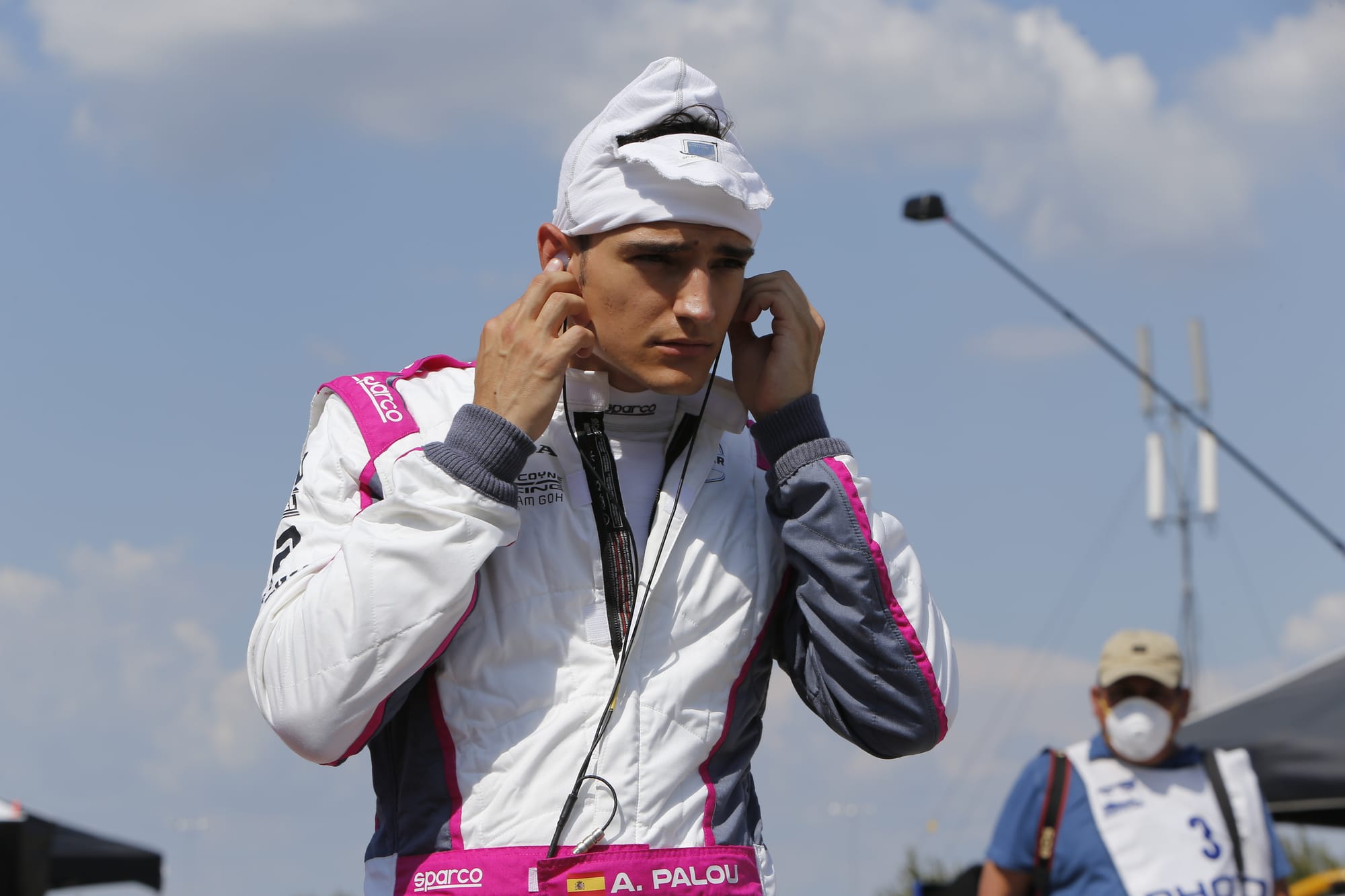
He was also extremely honest about knowing he didn't have the cash or the results - the two are obviously linked - in junior categories to make it to Formula 1 and that he just wanted to become a professional driver, not really caring what that was in. F1 was the dream for everybody, "but it was a dream for me when I was a kid, not when I grew up".
There's more of that maturity on display.
Only two races after that Texas debut and Palou was on the podium, which wasn't a feat unheard of, but the team had lost top engineer Michael Cannon before the season and Ferrucci didn't bag a podium that year either, so it's fair to say the Road America result was impressive.
Yes, Ferrucci finished ahead that year, but he scored 22% of his points for the season with his double-points fourth place at the Indy 500 - 65 points! - so the 52-point gap between him and Palou in the end-of-season standings was deceptive.
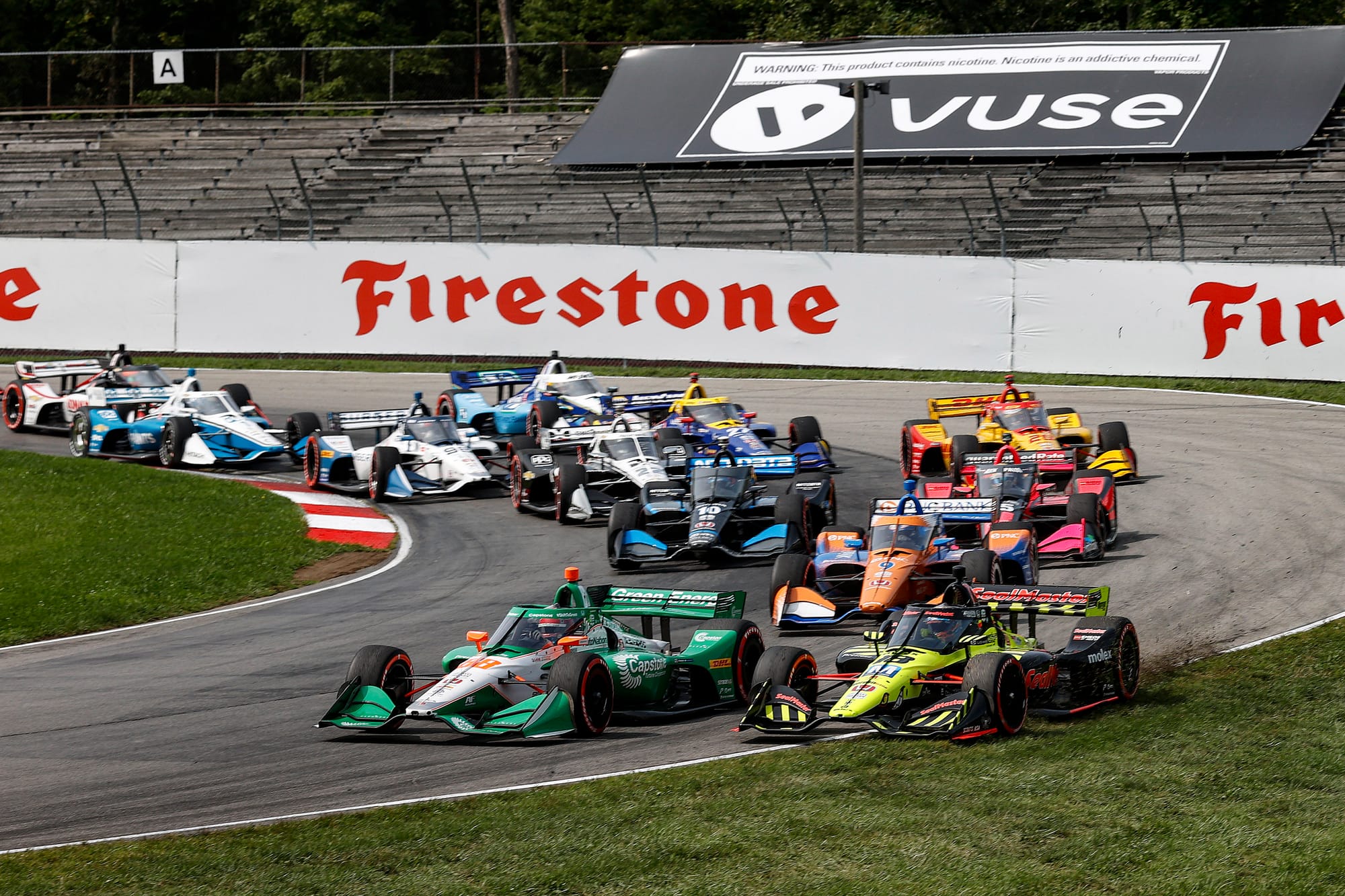
Palou had an average start of 12.29 and finish of 14.71, with the standout mishaps coming in the second Mid-Ohio race - where he qualified fourth but got shunted off at the first corner by Ferrucci (pictured going wide) - and then at Indianapolis.
The Indy 500 is where Palou's life changed. And it wasn't in conventional circumstances, because a driver with a near-total lack of driving errors in his IndyCar race career did make a big one here - yet it didn't cost him his big break.
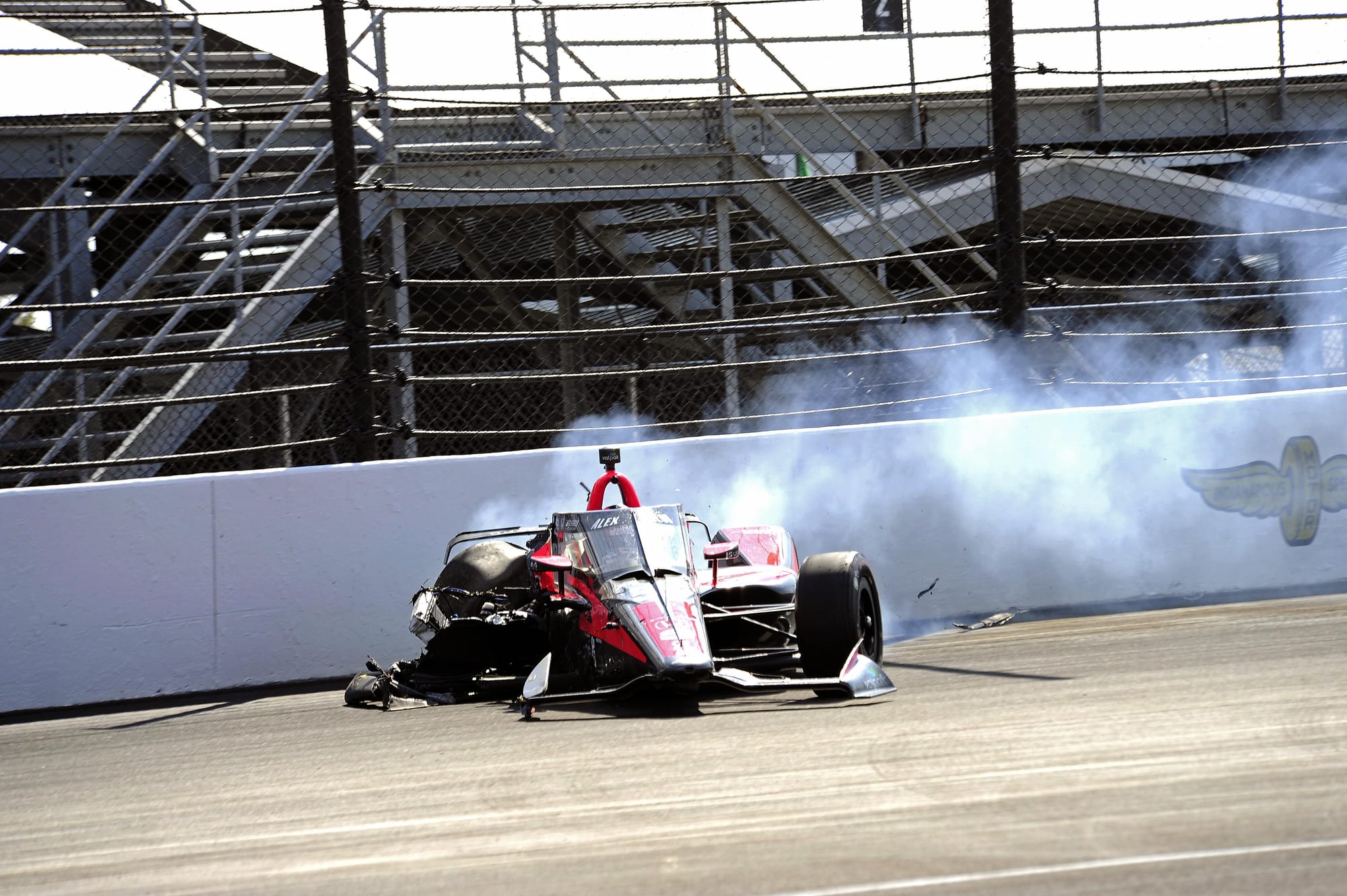
He set the fastest lap of the month and made it to the Fast Nine in qualifying for Coyne, a result that seemingly immediately alerted Ganassi to his talent.
Ganassi deserves credit here as while Penske, for example, often needs to see years of proof at other teams that a driver is good enough, or Andretti tends to 'breed' its young stars in Indy NXT (or previously Lights) to prepare them, Ganassi is much more vibes-based.
Chip and his right-hand man Mike Hull have such a good eye for talent, and they're willing to take the risk and get egg on their faces if it goes wrong. It's the antithesis of the Moneyball-style, data-driven approach to basically everything in sport these days. But when the outcome is signing someone no one was really interested in, then watching them win four titles in five years, well...throw out the data and let's do all of the driver market moves on pure feeling alone!
Ganassi's knack for gambles
Matt Beer
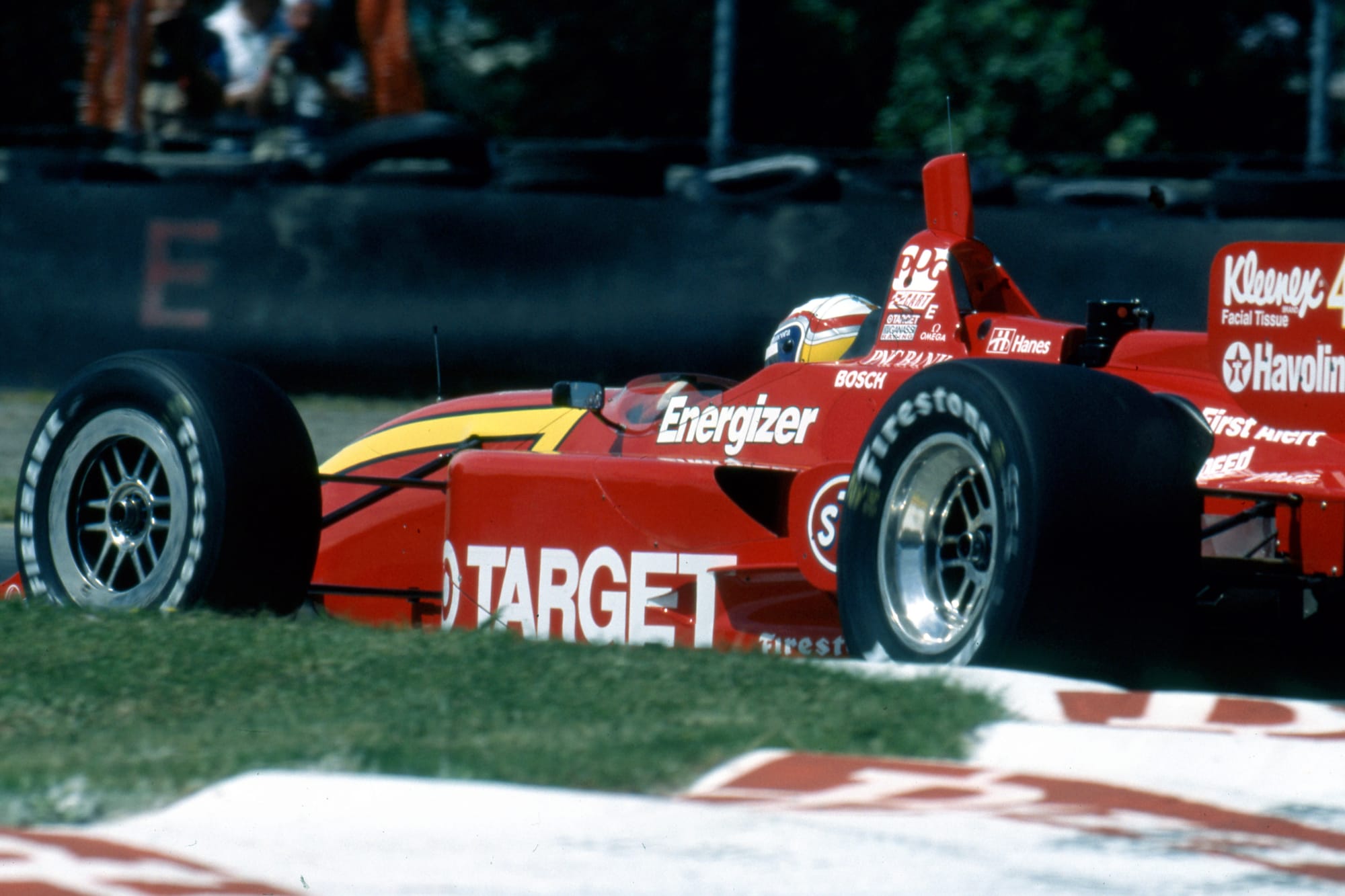
Among modern IndyCar's long-standing giants, Ganassi's always been the one most willing to take a leftfield gamble on talent or a driver it just seems to find interesting, so perhaps it should be no surprise that it reached into the midfield to pluck Palou into its car and begin the partnership that raised the bar for 2020s IndyCar.
Penske saw what the likes of Helio Castroneves, Will Power and Josef Newgarden could do in smaller teams for multiple years before giving them their big shots (and had plenty of in-house data on Scott McLaughlin), and many other teams' youth punts have been informed by obvious IndyCar feeder series form. It's Ganassi with the knack for the 'sorry, who?' out of the blue signing that pays off in abundance.
Taking Reynard's recommendation of Alex Zanardi - whose F1 record was far from compelling - was the first time it struck unexpected gold in this way (and Zanardi's rival for that seat was the late Jeff Krosnoff, who Ganassi was weighing up bringing in from years in Japanese Formula 3000 and sportscars). And would other teams have been so willing to take Williams's recommendation and bet everything on F3000 champion Juan Pablo Montoya as Zanardi's replacement?
Scott Dixon doesn't quite count as a gamble - his feeder series and PacWest CART form was compelling enough to make anyone take notice. But might his intended 2004 team-mate Tony Renna - signed by Ganassi on the basis of low-key promise in Indy Lights and for Kelley Racing but killed in a test crash before he could race for it - have turned out to be another unexpected gem?
It doesn't always work. Extrapolating the 1999 Montoya success into shipping in 2000 F3000 title rivals Bruno Junqueira and Nicolas Minassian as an all-rookie 2001 CART line-up was a step (way) too far. And though it was no surprise that Ganassi bet on Tomas Scheckter in 2003 after his explosive/destructive IRL debut season for Cheever, he turned out to be no Dixon.
But ultimately those moves were very Ganassi things to do, and the Ganassi way has brought a lot of titles for drivers you might never have expected to be US single-seater champions.
It wasn't easy to get Palou in to Ganassi and a lot of things had to happen to make it possible. Getting Jimmie Johnson and Tony Kanaan in the fourth car was a long-term project, so that didn't leave an obvious space for Palou - until Felix Rosenqvist shocked Ganassi by leaving at the end of 2020 to join McLaren.
Rosenqvist recently told The Race that was a mistake in pure driver market terms, although he praises the learning experience he had there. But with what Rosenqvist knows now, that seat never would have opened up and Palou doesn't get the chance.
"Me being at Ganassi and then leaving then was probably the wrong choice," Rosenqvist told The Race. "I'm definitely willing to admit that with hindsight."
It's hard to know if Honda and Team Goh - the Japanese team that partnered with Coyne to give Palou his break - would have funded Palou further. Coyne ended up with Romain Grosjean for 2021 alongside Ed Jones, but you get the feeling if the funding could have been found then Palou would have got another shot (alongside Grosjean, which would have been epic to see).
Given the COVID year was so truncated and Palou got basically no testing - something which made his success with Ganassi the next year so impressive, as there were still tracks he hadn't raced on in his first title-winning year - I think he'd have been given another chance. Otherwise, it's hard to imagine how he would have stayed on the grid without significant funding and a move to the IMSA SportsCar Championship or, if he was lucky, the World Endurance Championship might have been the result.
And Ganassi could have easily cooled its interest after Palou's Indy 500 crash. Funnily enough, he almost won it the following year.
Mom, I made it to The Corkscrew. 😛#IndyCar pic.twitter.com/SXrIuYiRT2
— Alex Palou Montalbo (@AlexPalou) November 10, 2020
Arriving at Ganassi, in pre-season he shocked the team with his pace at Laguna Seca and I think it was obvious quite quickly they had a potential star on their hands if he could marry his excellent approach and consistency to the kind of peak pace required to qualify and execute races well in IndyCar.
Going into the 2021 season, Dixon hadn't been beaten by a team-mate in nine years - Dario Franchitti winning his fourth title in 2011 was the last time it had happened - and he was the reigning champion, so The Race reckoned "a top-10 finish in the championship is an achievable and sensible goal" for Palou's first Ganassi season.
How wrong we were. But we weren't to know pre-season.
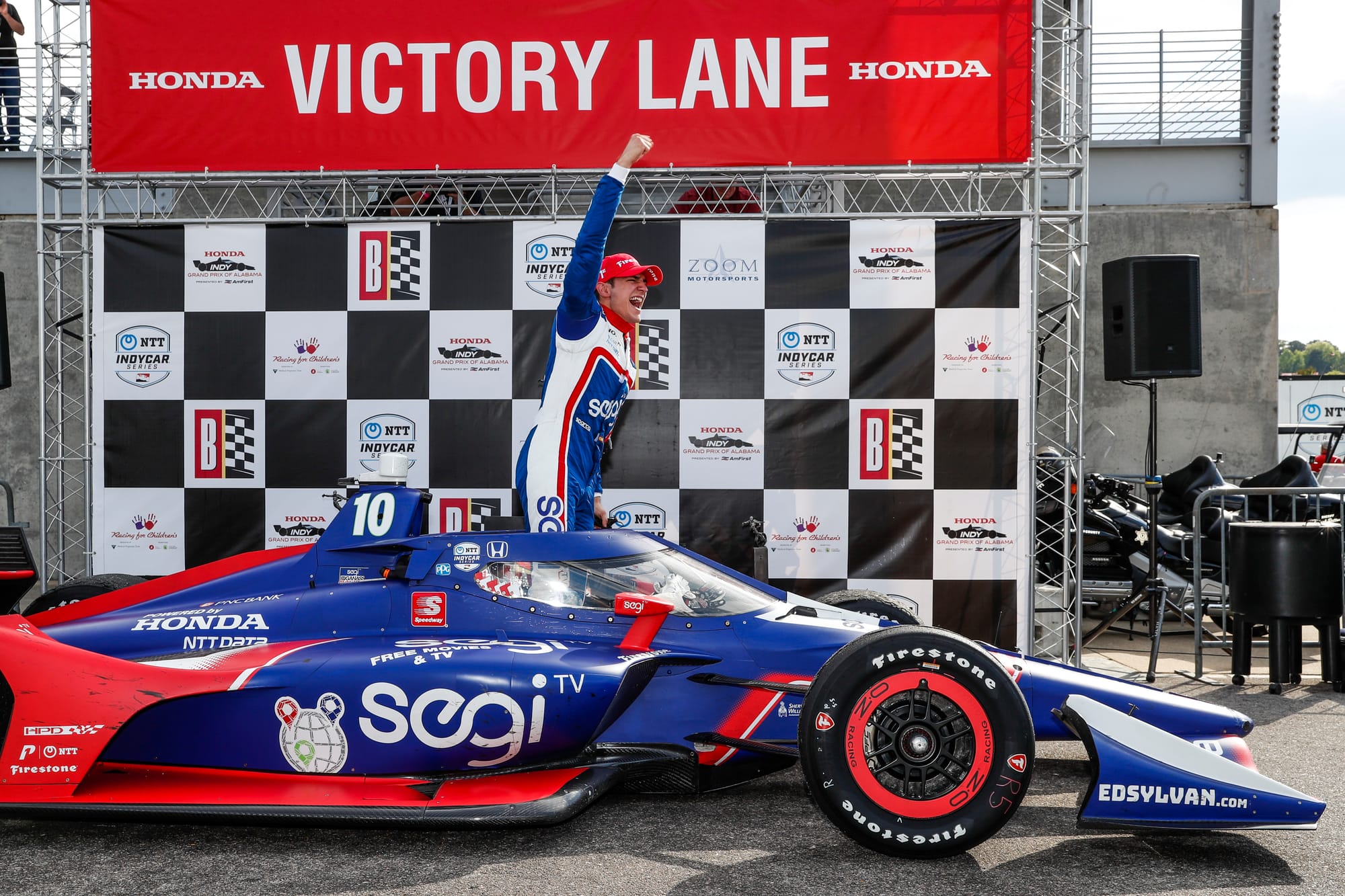
We ask Palou if he felt he had earned his chance at Ganassi back in 2020.
"It was a tough year, I think I did things that we were able to shine in almost every race," Palou explains. "Maybe in qualifying, maybe during the race or maybe during free practice that we were able to really do good stuff with the car.
"But obviously the results were not the ones I wanted or the team [Coyne] wanted. But lucky, lucky me that there's a guy that owns the biggest team that thought that I could win with his car, and that's Chip. And I think that's what matters, right? If he believes in me.
"He believes that I can do really good stuff for the team. I know I already believe in myself, I think every driver believes so much in himself. But knowing that one of the big guys really trusts in you and gives you one of the most historical cars in the field, it's amazing."
We all know how that faith played out. Ganassi has stuck by Palou through more drama than arguably any other team-owner/driver combo in modern racing history. After a wobble in late 2022, when it was hard to see Palou doing much better than second or third in the championship anyway, and when it looked like Ganassi would take Palou to court, his on-track performances have survived even the most gut-wrenching off-track turmoil and every year he seems to keep getting better.
"I've never seen a guy work so quietly and diligently at his craft as this guy," said Ganassi after Palou's title success. And bear in mind here that he also has Dixon in his team.
"I said in the beginning of the year that we're just scratching the surface of his talent. I still think he's got more in his gas tank for this season, and he's got more in his tank for coming seasons."
That's about the scariest thought any competitor of Alex Palou can have right now. They all have a long off-season to work out how to beat this winning machine.
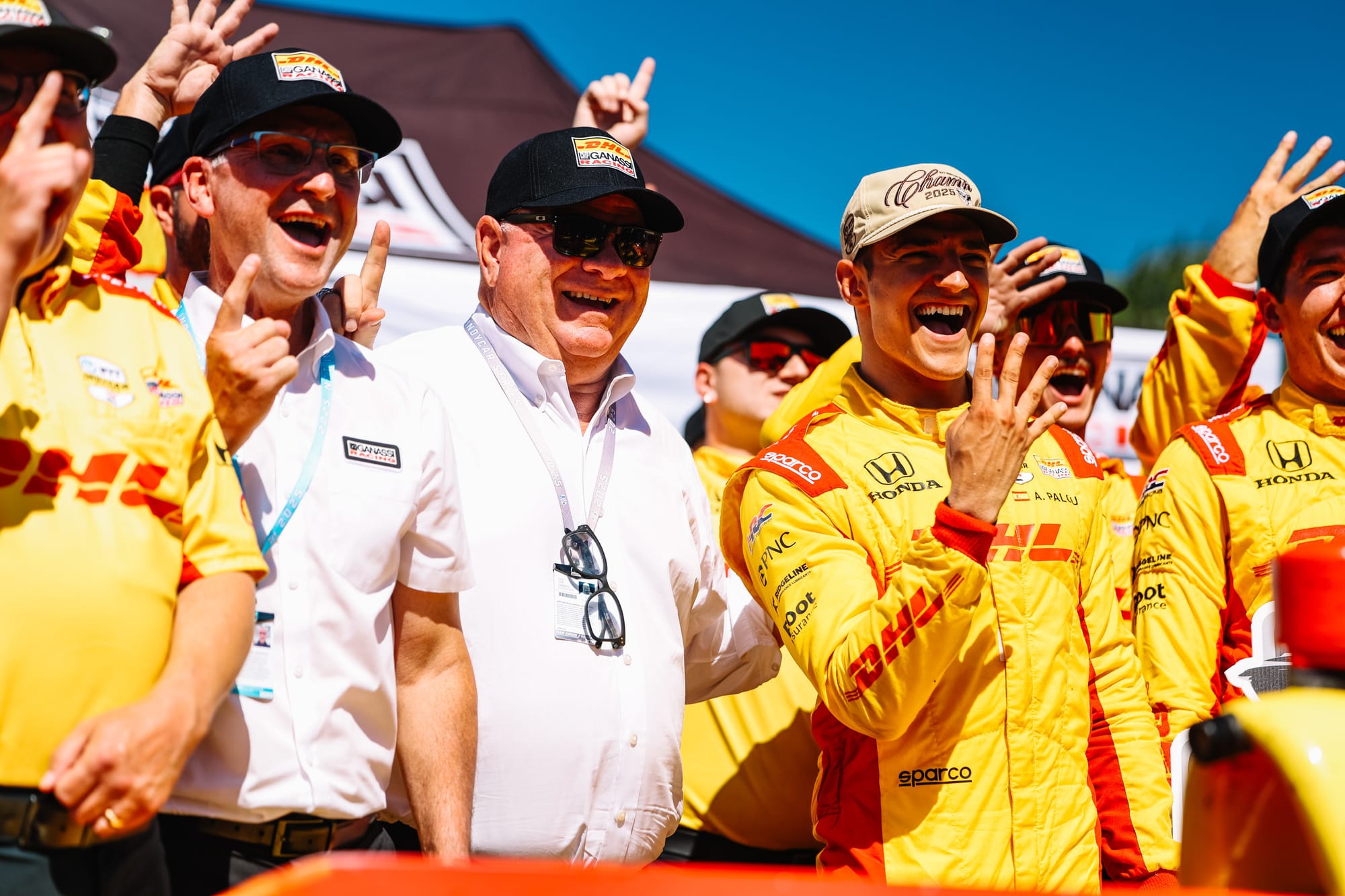
And they wouldn't have to think about that had Ganassi not gone with his gut and taken a massive gamble on a relative unknown, without the requisite proof that this is what he would become.
Whether it's chance or brilliant analysis, Ganassi is reaping the benefits.
And it's not that original gamble to sign Palou alone. He's stuck by him more often than not and even worked with him to give Palou more of what he wants - like testing for McLaren in F1 - when he could have easily railed against Palou's wishes.
At times he may have given Palou too much rope but, sat here today, all of Ganassi's decision making has been justified with the racing version of the riches of King Solomon.


